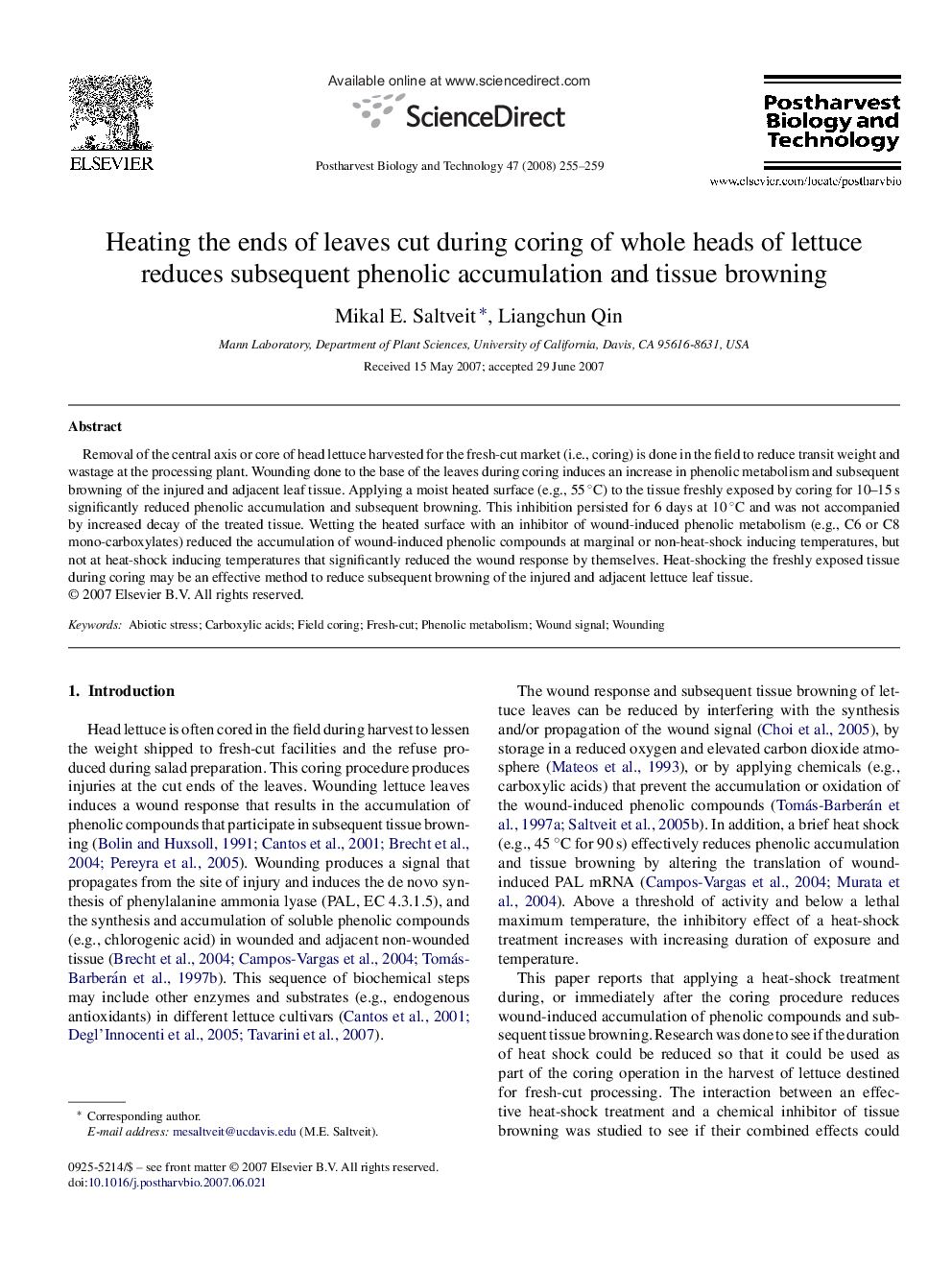| کد مقاله | کد نشریه | سال انتشار | مقاله انگلیسی | نسخه تمام متن |
|---|---|---|---|---|
| 4519472 | 1322837 | 2008 | 5 صفحه PDF | دانلود رایگان |
عنوان انگلیسی مقاله ISI
Heating the ends of leaves cut during coring of whole heads of lettuce reduces subsequent phenolic accumulation and tissue browning
دانلود مقاله + سفارش ترجمه
دانلود مقاله ISI انگلیسی
رایگان برای ایرانیان
کلمات کلیدی
موضوعات مرتبط
علوم زیستی و بیوفناوری
علوم کشاورزی و بیولوژیک
علوم زراعت و اصلاح نباتات
پیش نمایش صفحه اول مقاله

چکیده انگلیسی
Removal of the central axis or core of head lettuce harvested for the fresh-cut market (i.e., coring) is done in the field to reduce transit weight and wastage at the processing plant. Wounding done to the base of the leaves during coring induces an increase in phenolic metabolism and subsequent browning of the injured and adjacent leaf tissue. Applying a moist heated surface (e.g., 55 °C) to the tissue freshly exposed by coring for 10-15 s significantly reduced phenolic accumulation and subsequent browning. This inhibition persisted for 6 days at 10 °C and was not accompanied by increased decay of the treated tissue. Wetting the heated surface with an inhibitor of wound-induced phenolic metabolism (e.g., C6 or C8 mono-carboxylates) reduced the accumulation of wound-induced phenolic compounds at marginal or non-heat-shock inducing temperatures, but not at heat-shock inducing temperatures that significantly reduced the wound response by themselves. Heat-shocking the freshly exposed tissue during coring may be an effective method to reduce subsequent browning of the injured and adjacent lettuce leaf tissue.
ناشر
Database: Elsevier - ScienceDirect (ساینس دایرکت)
Journal: Postharvest Biology and Technology - Volume 47, Issue 2, February 2008, Pages 255-259
Journal: Postharvest Biology and Technology - Volume 47, Issue 2, February 2008, Pages 255-259
نویسندگان
Mikal E. Saltveit, Liangchun Qin,